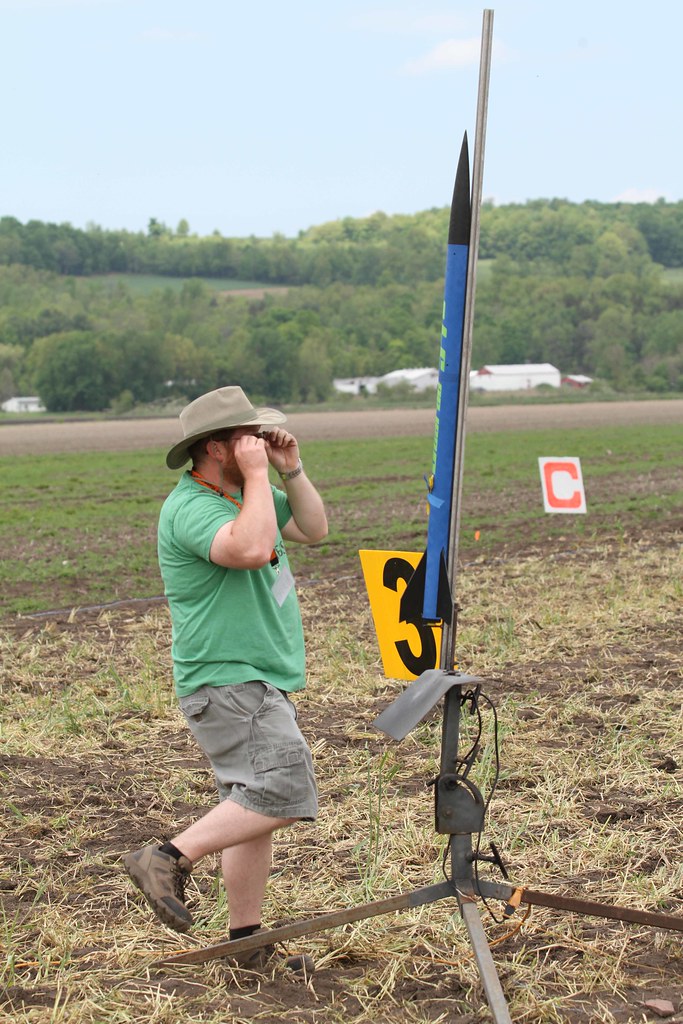Thanks for calling me out on it. It never even occoured to me to solve the problem with a shunt or switch for some reason. Couldnt see the forest for the trees on this one.
You're welcome. Maybe I can give you a chance for payback?
As I mentioned here before, I have changed my electronics setup for my three-stager to include wifi switches. The main reason for this is to not have to climb a ladder and be 25' up in the air while arming N motors. It doesn't bother me all that much - I've done it many times, but it drives my wife nuts and people seem to want to hang around to hold the ladder for me when I don't really want them there. This changes the arming procedure. I'd really appreciate a review of my plan.
In both upper stages, the motor ignition is through an easymega. One characteristic of the easymega is that it has to be turned on while vertical (turning it on horizontally puts it in USB mode). So, to get off the ladder, the wifi switches have to be used to provide power to the easy megas while the rocket is vertical. The switch that was used to power the easy mega is now used to power the wifi switch instead. So, the entire procedure, starting from the all up test for the second stage would be:
- Place shunts in "disconnected" position with rocket horizontal and igniter out of motor
- Turn on other deployment electronics (PF CF in 2nd, timers in 3rd)
- Close the wifi switch. Assuming the easymega does not turn on, place shunts in connected position
- Place rocket vertical in stand (see pic). This is the potentially unsafe step I'm not sure about with deployment electronics active. Maybe I should wait and just do this after the rocket is vertical?
- Turn on wifi switch and check easymega continuity indications
- Move shunts to disconnected, open wifi switch to easymega and turn off wifi switch itself, turn off PF CF or timers.
- Insert igniter, place on rail, and repeat above with 3rd stage.
Once both stages are on the rail:
- Turn on PF CF in 2nd stage and timers in the 3rd stage and verify continuity (gotta turn these on now if I want to stay off the ladder)
- Turn on Wifi switch power and verify Easymega does not turn on
- Folks back off, turn shunts to connected position
- Raise rocket, folks leave
- Turn on easymegas with wifi switches (hope I can hear that they turn on)
- Launch rocket
I have something of an advantage doing this at Balls because it is not necessary for people to be present to raise the rocket. Thus, activating deployment electronics with the rocket horizontal is not a safey issue. They also put me 2 miles from the flight line.
Jim







